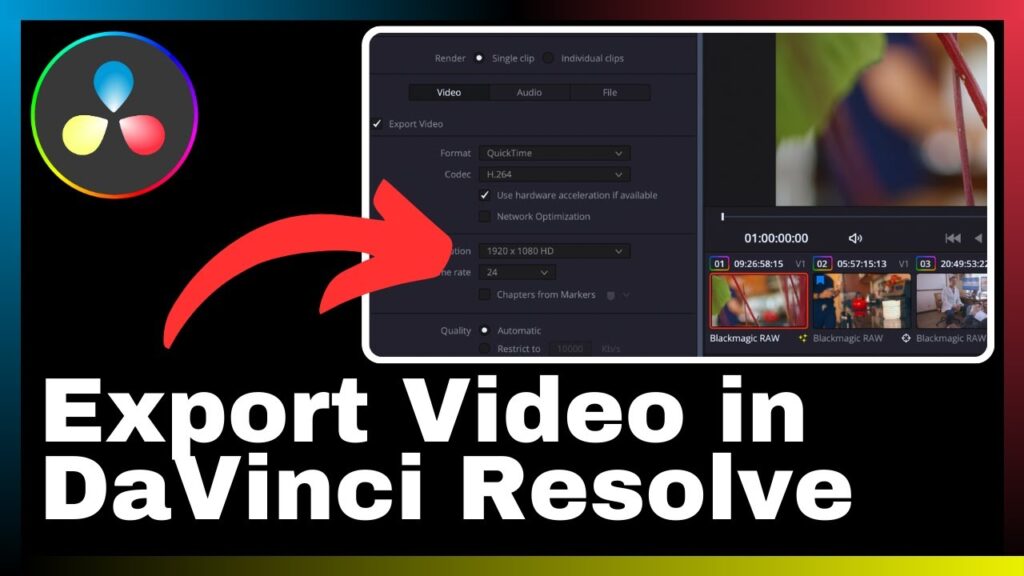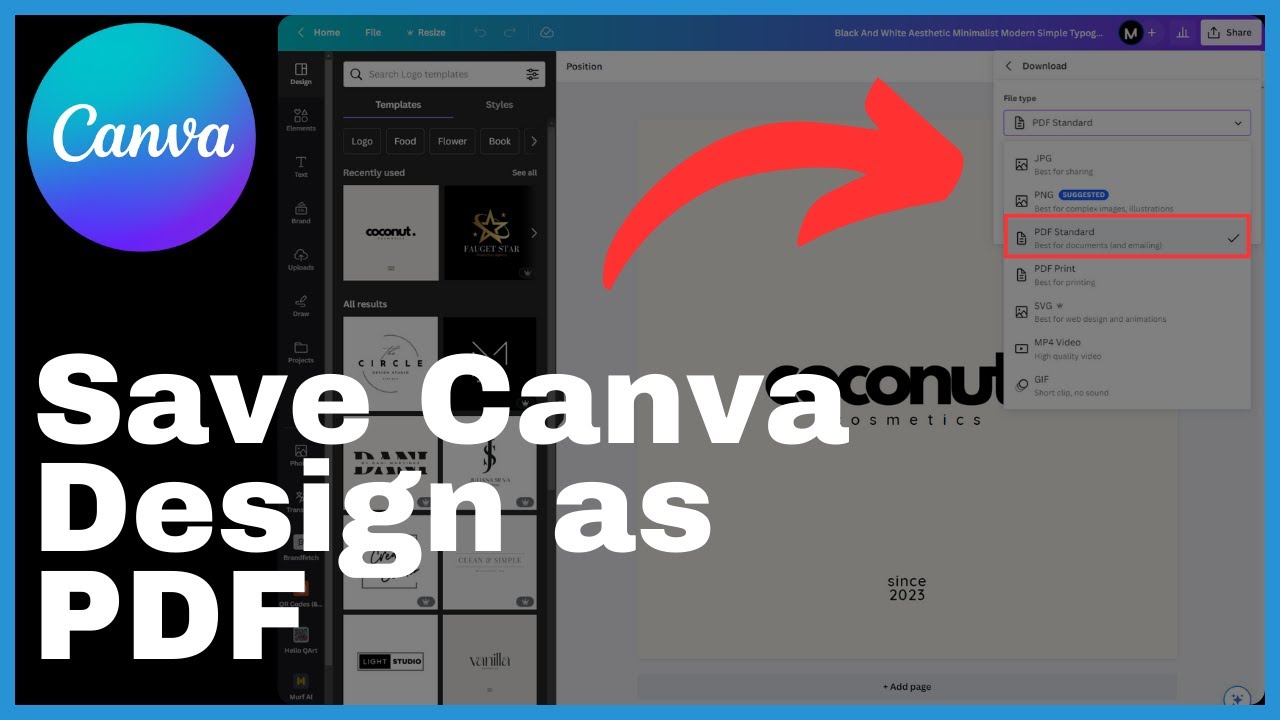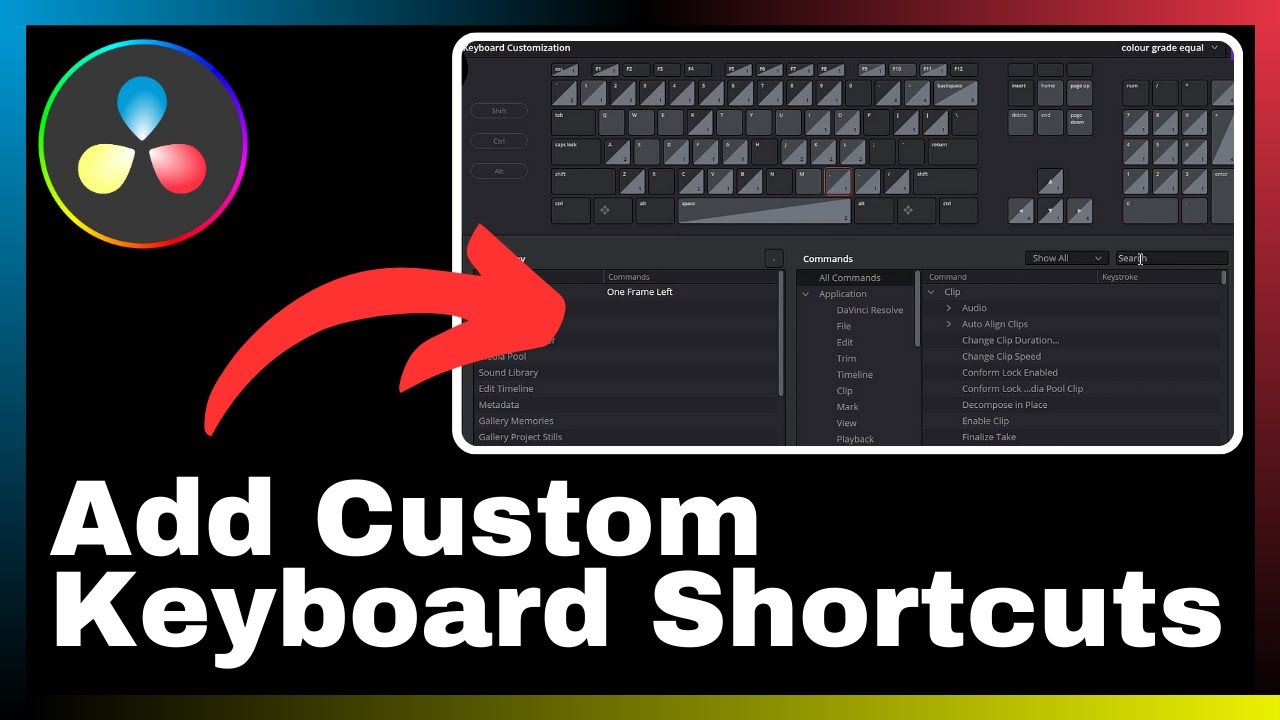In the video titled “How to Export Video in DaVinci Resolve,” presented by Media Magnet Guide, you will learn valuable techniques on effectively exporting your videos using the DaVinci Resolve software. This tutorial aims to provide you with step-by-step instructions on exporting videos for various platforms or purposes. DaVinci Resolve is an all-in-one software that encompasses video editing, color correction, visual effects, and audio post-production capabilities, making it a versatile and popular choice among professionals and beginners alike. By following this tutorial, you will gain a comprehensive understanding of the export process and be equipped with the necessary skills to optimize your videos for different formats and audiences.

Understanding DaVinci Resolve
What is DaVinci Resolve
DaVinci Resolve is a powerful all-in-one video editing, color correction, visual effects, and audio post-production software. It is widely used by professionals and beginners alike due to its comprehensive set of tools and features. Whether you’re working on a small project or a large-scale production, DaVinci Resolve offers the functionality and flexibility to meet your needs.
Who uses DaVinci Resolve
DaVinci Resolve is used by a wide range of professionals in the film, television, and video production industries. It is a popular choice among video editors, colorists, visual effects artists, and audio post-production professionals. Additionally, many aspiring filmmakers and video enthusiasts use DaVinci Resolve for their projects, thanks to its user-friendly interface and powerful capabilities.
Key features of DaVinci Resolve
DaVinci Resolve offers a multitude of key features that make it a go-to software for video editing and post-production. Some of its notable features include:
-
Advanced color grading tools: DaVinci Resolve is renowned for its industry-leading color grading capabilities. It offers a wide range of color correction tools, including curves, color wheels, and advanced grading panels, allowing users to achieve the desired look and feel for their footage.
-
Professional editing tools: With DaVinci Resolve, you can perform precise cuts, trims, and edits on your video clips. Its timeline-based editing interface provides intuitive controls and allows for seamless editing workflow.
-
Visual effects and motion graphics: DaVinci Resolve comes with a variety of visual effects and motion graphics tools, enabling users to enhance their videos with stunning visuals and animations. From simple motion graphics to complex compositing, DaVinci Resolve has you covered.
-
Audio post-production capabilities: In addition to its video editing features, DaVinci Resolve offers comprehensive audio editing and mixing tools. Users can manipulate audio tracks, apply effects and filters, and achieve professional-quality sound design.
-
Collaboration and workflow management: DaVinci Resolve provides robust collaboration features, allowing multiple users to work on the same project simultaneously. It also offers efficient media management and project organization tools, making it easy to keep track of your files and assets.
Setting Up your Project in DaVinci Resolve
Creating a new project
To get started with your project in DaVinci Resolve, you need to create a new project. Begin by launching the software and selecting the “Create New Project” option. Give your project a name and choose a location to save it. You can also specify the project settings, such as frame rate and resolution, based on your specific requirements.
Importing footage into your project
Once you’ve created a new project, it’s time to import your footage into DaVinci Resolve. Simply navigate to the media pool panel and click on the import button. Select the files you want to import and choose the import settings, such as whether to import the entire clip or only a portion of it. DaVinci Resolve supports various video formats, ensuring compatibility with your footage.
Organizing your media files
Proper organization of media files is essential for efficient workflow management in DaVinci Resolve. You can use bins and folders to categorize and arrange your media files in a logical manner. Create bins for different types of assets, such as video clips, audio files, images, and graphics. Organizing your media files will help you locate them quickly and effectively during the editing process.
Navigating the DaVinci Resolve Interface
Overview of the interface
The DaVinci Resolve interface is designed to provide a seamless and intuitive user experience. The main components of the interface include the media pool, timeline, viewer, and various panels for editing, color grading, and effects. Familiarizing yourself with the interface layout will help you navigate through the software and access the tools and features you need.
Understanding different panels
DaVinci Resolve consists of multiple panels, each serving a specific purpose in the editing and post-production process. Some of the important panels include the media pool, timeline, inspector, color grading, and effects panels. The media pool panel allows you to manage and organize your media files, while the timeline panel displays your footage in a timeline format. The inspector panel provides detailed information about your clips, and the color grading and effects panels offer tools for enhancing and manipulating your footage.
Customizing your workspace
DaVinci Resolve offers the flexibility to customize your workspace according to your preferences and workflow. You can rearrange and resize panels, create custom layouts, and save them for future use. By customizing your workspace, you can optimize your workflow and have quick access to the tools and features you use frequently. Experiment with different layouts to find the one that works best for you.
Editing Your Video in DaVinci Resolve
Cutting and trimming clips
One of the fundamental aspects of video editing in DaVinci Resolve is cutting and trimming clips. To cut a clip, select the blade tool from the toolbar and click on the desired point in the clip where you want to make the cut. You can then select the portion of the clip you want to remove and delete it. Trimming allows you to adjust the duration of a clip by adding or removing frames from the beginning or end. Use the trim tool to fine-tune the duration of your clips for seamless transitions and pacing.
Adding transitions
Transitions are essential for creating smooth and visually appealing video edits. DaVinci Resolve offers a wide range of transition effects, including fades, wipes, and dissolves. To add a transition, simply drag and drop it between two clips on the timeline. You can customize the duration and style of the transition to suit the mood and style of your video. Experiment with different transitions to add creativity and polish to your edits.
Color grading your footage
Color grading is a crucial step in enhancing the visual aesthetics of your footage. DaVinci Resolve provides a comprehensive set of professional-grade color grading tools that allow you to manipulate the colors, contrast, and overall look of your video. Use the color grading panel to adjust parameters such as brightness, saturation, and color temperature. You can also apply LUTs (Look-Up Tables) to achieve specific visual styles or match the colors between different clips.
Adding text and titles
Text and titles are important elements in video editing, as they provide information, context, and branding. DaVinci Resolve offers robust text and titling tools that allow you to add and customize text overlays in your video. You can choose from a variety of fonts, sizes, and styles, and position the text wherever you want on the screen. Furthermore, you can animate the text to create engaging and dynamic title sequences.
Understanding the Export Settings
The delivery page overview
The delivery page in DaVinci Resolve is where you set up and customize the export settings for your video. It provides a comprehensive overview of all the export options and parameters you need to specify before exporting your video. From the delivery page, you can choose the export format, adjust video and audio settings, specify the output resolution and frame rate, and select the destination for your exported file.
Choosing your export format
DaVinci Resolve supports a wide range of export formats, ensuring compatibility with various platforms and devices. When choosing your export format, consider the requirements of the platform or device on which you intend to share or view your video. Common export formats include MP4, MOV, AVI, and MKV. Each format has its own advantages and disadvantages, so choose the one that best suits your needs.
Setting up Video, Audio, File, and Render settings
In addition to selecting the export format, you need to configure various video, audio, file, and render settings to optimize your exported video. Video settings include parameters such as resolution, frame rate, and aspect ratio. Audio settings allow you to specify the audio format, sample rate, and bit depth. File settings determine the file format and codec used for the exported video. Render settings dictate how DaVinci Resolve processes and renders the video during the export process.
Exporting for Different Platforms
Exporting for YouTube
When exporting a video for YouTube, it’s essential to follow YouTube’s recommended settings to ensure optimal playback and quality. DaVinci Resolve offers built-in presets specifically for YouTube, making it easy to export videos that meet the platform’s requirements. Ensure your video has the correct resolution, frame rate, and aspect ratio, and use efficient video codecs to minimize file size without sacrificing quality.
Exporting for Vimeo
Vimeo is another popular platform for sharing and showcasing videos. To export a video for Vimeo, you need to consider the platform’s recommended settings. DaVinci Resolve provides Vimeo presets that automatically configure the export settings for optimal playback on Vimeo. These presets ensure the correct resolution, frame rate, and compression settings for your exported video.
Exporting for Instagram
Instagram has specific requirements for videos shared on its platform, such as maximum duration and aspect ratio limitations. When exporting a video for Instagram using DaVinci Resolve, make sure to adhere to these requirements. Trim the video to meet the maximum duration and adjust the aspect ratio to suit Instagram’s preferred dimensions. Compress the video using efficient codecs to reduce file size for faster uploads.
Exporting for Facebook
To export a video for Facebook, it is crucial to follow the platform’s guidelines to ensure the best quality and compatibility. DaVinci Resolve offers Facebook presets that configure the export settings according to Facebook’s recommendations. These presets handle aspects such as resolution, frame rate, and compression settings, allowing you to export videos that are optimized for Facebook playback.
Exporting in Different Formats
Exporting in MP4
MP4 is a widely used and versatile video format suitable for various platforms and devices. Exporting a video in MP4 format using DaVinci Resolve is straightforward. Simply select the MP4 format in the export settings and configure the desired video and audio settings. DaVinci Resolve supports different codecs for MP4, such as H.264 and H.265, allowing you to choose the one that best suits your needs.
Exporting in MOV
MOV is a popular video format commonly used in the Apple ecosystem. If you intend to share your video on Apple devices or software, exporting it in MOV format is recommended. DaVinci Resolve supports MOV export and offers a range of codecs and settings to customize the output. Consider the compatibility and requirements of the target device or software when choosing the MOV export settings.
Exporting in AVI
AVI is an older video format, but it is still supported by many media players and editing software. If you require broader compatibility with legacy systems or specific software, exporting your video in AVI format may be necessary. DaVinci Resolve allows you to export your video in AVI format and offers various codecs and settings to optimize the output for your specific needs.
Exporting in MKV
MKV is a popular container format known for its ability to store multiple audio, video, and subtitle streams in a single file. Exporting your video in MKV format using DaVinci Resolve is straightforward. Select the MKV format in the export settings and configure the desired video and audio settings. Consider the compatibility of the MKV format with the target platform or device for smooth playback.
Advanced Export Options
Using custom export settings
While DaVinci Resolve offers built-in presets for various export formats, you may have specific requirements that are not covered by these presets. In such cases, you can use custom export settings to fine-tune the output according to your needs. Customize parameters such as resolution, frame rate, bitrate, and codec to achieve the desired quality and compatibility for your exported video.
Batch exporting
Batch exporting allows you to export multiple videos in a single operation, saving time and effort. DaVinci Resolve provides batch exporting functionality, allowing you to queue up multiple projects or clips and export them consecutively. This feature is particularly useful when working on large-scale projects or when you have multiple videos to export with similar settings.
Exporting with alpha channel
An alpha channel is a transparent channel that allows for the compositing of footage or graphics on top of other video or images. DaVinci Resolve offers the ability to export videos with an alpha channel, enabling you to overlay your footage onto different backgrounds or integrate it seamlessly with other visual elements. To export with an alpha channel, make sure to enable the option in the export settings and choose a codec that supports alpha channel export.
Common Issues and Troubleshooting
Resolving export errors
Encountering errors while exporting can be frustrating. Common export errors in DaVinci Resolve can be due to issues such as incompatible settings, unsupported formats, or insufficient system resources. To resolve export errors, ensure that your export settings are compatible with the target platform or device. Check for any conflicting settings or corrupted footage. If the issue persists, try exporting a smaller portion of the video or optimizing your system resources by closing unnecessary applications.
Overcoming slow render times
Long render times can hinder your productivity and workflow. To overcome slow render times in DaVinci Resolve, consider optimizing your hardware and software settings. Ensure that your computer meets the minimum system requirements for smooth performance. Close unnecessary applications and processes to free up system resources. Additionally, consider using optimized media formats to reduce rendering time. If render times remain slow, you may need to upgrade your hardware or consider using a more powerful computer.
Managing small file size or low-quality exports
When exporting videos, it’s common to encounter issues such as excessively large file sizes or low-quality output. To manage small file sizes, consider adjusting the bitrate and compression settings in the export settings. Find a balance between file size and quality that suits your needs. If you’re experiencing low-quality exports, ensure that the source video files are of sufficient quality and that your export settings are optimized for preserving video quality.
Conclusion
In conclusion, DaVinci Resolve is a powerful and versatile software for video editing, color grading, visual effects, and audio post-production. Through this comprehensive guide, you have gained a better understanding of DaVinci Resolve’s key features, project setup, interface navigation, video editing techniques, export settings, and troubleshooting common issues. By following the outlined steps and tips, you can effectively export your videos for various platforms, ensuring optimal playback quality and compatibility. With DaVinci Resolve at your disposal, you have the tools to bring your creative vision to life and produce professional-quality videos.



























